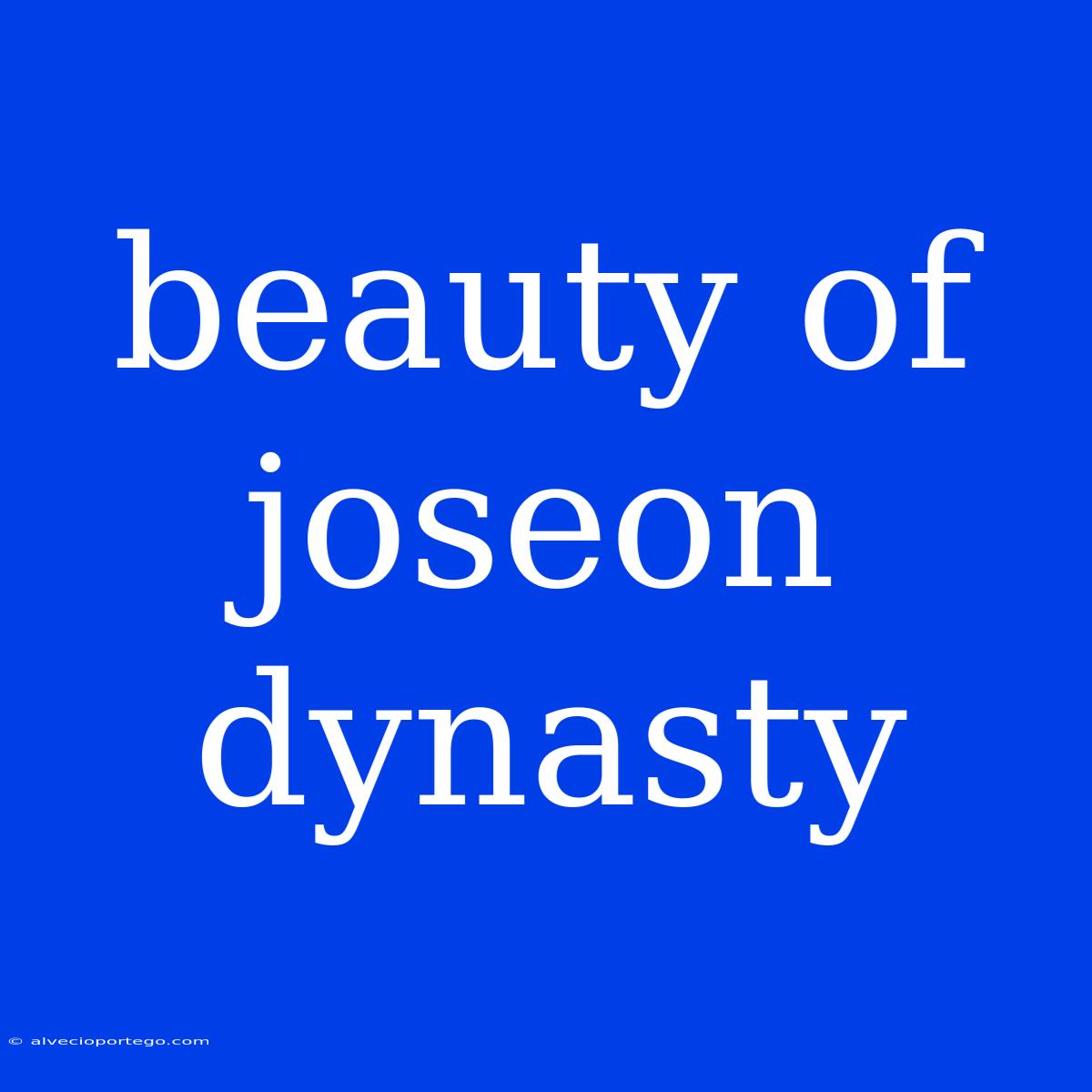The Beauty of the Joseon Dynasty: A Look at Art, Culture, and Legacy
The Joseon Dynasty, which reigned over Korea from 1392 to 1910, was a period of remarkable artistic and cultural flourishing. Known for its Confucian ideals, vibrant aesthetics, and enduring legacy, the Joseon era left an indelible mark on Korean history and identity.
A Golden Age of Korean Art
Painting: Joseon art is renowned for its delicate brushstrokes, intricate details, and captivating landscapes. From the masterful landscapes of Kim Hong-do and the meticulous portraits of Shin Yun-bok to the evocative "Birds and Flowers" paintings, the dynasty showcased a diverse range of artistic styles.
Ceramics: Joseon ceramics, especially white porcelain, are highly prized for their elegance and practicality. The distinctive "buncheong" pottery with its blue and white designs, as well as the elegant "celadon" wares, are testaments to the dynasty's skilled artisans.
Calligraphy: The art of calligraphy, a cornerstone of Confucianism, flourished under the Joseon Dynasty. Brushstrokes became a powerful form of expression, embodying grace, precision, and the artist's individual character.
A Rich Tapestry of Culture
Confucianism: As the dominant ideology, Confucianism shaped the social structure and moral principles of the Joseon Dynasty. It emphasized filial piety, loyalty, and respect for hierarchy, which played a significant role in shaping the dynasty's art, literature, and daily life.
Literature: The Joseon Dynasty saw a blossoming of literature, with renowned poets like Yi Hwang and Yi I enriching the literary landscape. Sijo (short lyrical poems) and Pansori (narrative singing) became popular forms of artistic expression.
Music: Traditional Korean music, including gugak and pansori, reached new heights during the Joseon period. Instruments like the gayageum (zither), geomungo (harp), and piri (oboe) became integral to the musical landscape.
A Lasting Legacy
The Joseon Dynasty's legacy extends beyond its artistic and cultural contributions. It is remembered for its strong national identity, its advancements in science and technology, and its lasting impact on Korean society.
The Joseon era witnessed the development of a distinct Korean alphabet (Hangul), the advancement of printing technology, and the establishment of a strong centralized government. These achievements laid the foundation for the modern Korean nation.
Exploring the Joseon Dynasty
To truly appreciate the beauty of the Joseon Dynasty, consider visiting these iconic sites:
- Gyeongbokgung Palace: The grandest of the five grand palaces in Seoul, showcasing the imperial grandeur of the dynasty.
- Changdeokgung Palace and Secret Garden: A UNESCO World Heritage site, offering a glimpse into the dynasty's refined aesthetic and serene beauty.
- Namsan Hanok Village: A traditional Korean village in Seoul, showcasing the architectural beauty of Joseon-era homes.
By delving into the art, culture, and history of the Joseon Dynasty, we can gain a deeper understanding of the rich tapestry of Korean heritage and the enduring legacy of this fascinating period.

